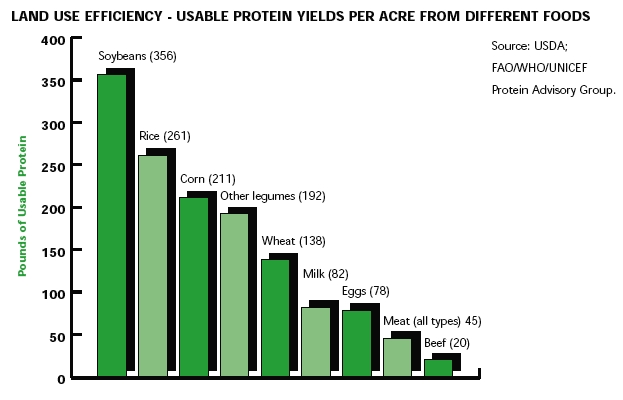Pescetarian Life |
 |
Visitor count:
Ethical Aspect of the Pescetarian Lifestyle
What are ethics? How are ethics related to the foods we eat? An ethical issue arises anytime one's actions have the potential to affect the interests of someone else. What we put on our plates every day affects us directly (our health) and indirectly (environment, world hunger, and of course, the animals that are raised to become our food).
Similarly, the UK poultry industry claims that through selective breeding it has improved feed efficiency to the point
where it takes only 1.6 kg of feed to produce 1 kg of weight gain per animal, but this takes no account of the fact that
by its own calculation the total edible meat yield from each bird is only 33.7 per cent of the total carcase. Once the
inedible part of the dead animal is taken into account, the ratio of grain to meat becomes considerably higher.
Given that there is no such thing as the ultimate accurate scientific calculation, the following assessment by the US
Council for Agricultural Science and Technology (CAST) - an organisation that would claim to have no bias - gives a
useful indication. The statistics, based upon a survey of several other studies, are particularly relevant since they
include conversion rates for feed to finished product, as well as the more often quoted feed to weight of animal
when slaughtered.
Once again, assessments vary as to exactly how much more land it takes to produce meat than it does to provide
the equivalent amount of calories by growing food directly for human consumption. According to the World Health
Organisation (WHO) and the Food and Agriculture Organisation of the United Nations (FAO), ‘the number of people
fed in a year per hectare ranges from 22 for potatoes and 19 for rice down to 1 and 2 people respectively for beef
and lamb’. 72 While it would be wrong to conclude that a restricted diet of rice or potatoes alone will provide all the
necessary micronutrients for human health, this can be taken, nevertheless, as another clear indication of how the
answer to feeding hungry people is not to move towards a largely meat-based diet. A more sensible policy would be
to base dietary goals on the traditional eating patterns of those populations in developing countries who, despite
relative poverty, do have enough food to maintain good health. It would be unusual for livestock products to play
more than a minor part in such diets, which consist for the most part of grains, legumes, fruits, vegetables and
other plant products. Improving their quality and variety offers a more rational approach to world food production
than attempting to emulate the unsustainable model practised in the developed world.
Coming soon!
Coming soon!
|
© 2007 Pescetarian Life - All rights reserved.


